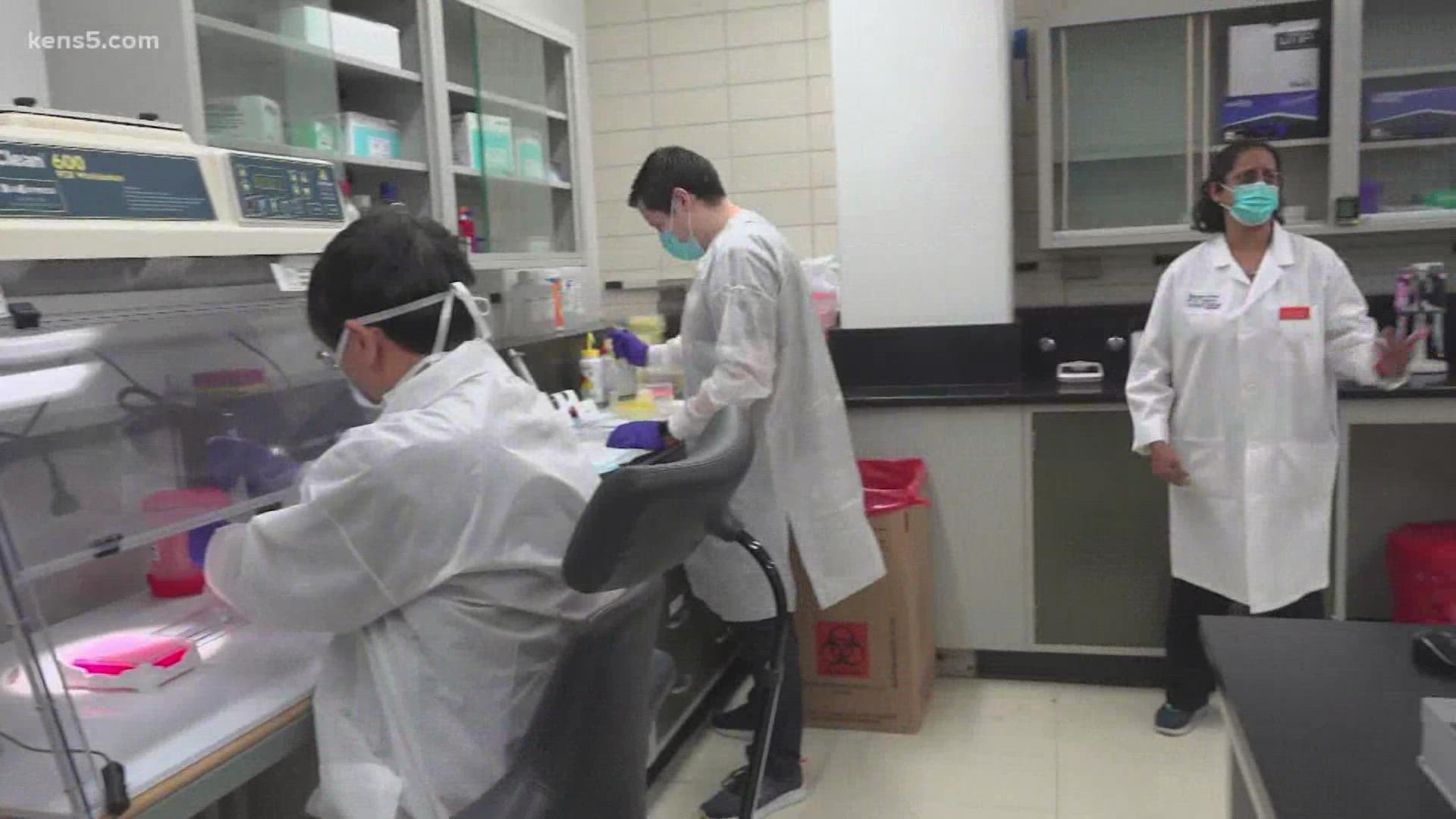SAN ANTONIO — Need a vaccine appointment? Click here for the latest information on local vaccine distribution with our ongoing Vaccine Tracker.
Numbers are continuing to climb in Bexar County as the new omicron variant begins to lurk around, just before the holidays when several people are traveling. The first known Texas case of the variant was reported in Houston and experts say it spreads rapidly.
Latest Coronavirus Numbers
Here are the latest numbers reported by Bexar County and state officials:
Bexar County (data as of Monday, Dec. 20):
- 427 new cases were reported Monday; the seven-day moving average of new cases is 274 per day, compared to 252 the previous week.
- The county says 2 people passed away and 180 COVID patients are in the hospital. 78% of hospitalized COVID patients are unvaccinated.
- 6 pediatric patients are COVID positive. 23 people were newly admitted and 83 are in the ICU; 40 are on ventilators.
- There were 284 new cases on Saturday and 321 new cases on Sunday.
Bexar County (data as of Thursday, Dec. 16):
- 252 additional COVID-positive cases were reported Thursday; the seven-day moving average of new cases is down to 231 per day, compared to 262 a week ago. The total number of cases rose to 331,703.
- The county's death toll rose to 4,962 after 0 new deaths were reported Thursday. In the last week, 3 virus-related fatalities were reported by Metro Health.
- As of Thursday, 193 Bexar County residents are hospitalized. 44 patients are on ventilators, while 79 are in intensive care, and there are 4 pediatric COVID patients
Texas (data as of Thursday, Dec. 16):
- 5,735 new cases were reported across Texas Thursday, including 4,319 confirmed and 1,416 probable diagnoses. More than 4.391 million Texans have been diagnosed with COVID-19 since the pandemic began.
- 90 additional deaths were reported, raising the statewide death toll from virus complications to 73,658.
- 3,134 lab-confirmed COVID-19 patients were hospitalized across Texas as of Thursday; that includes 74 pediatric COVID-19 patients in hospitals across the state. The state has 536 adult ICU beds and 106 pediatric ICU beds available.
More county case information is available through the Texas Department of Health Services COVID-19 dashboard.

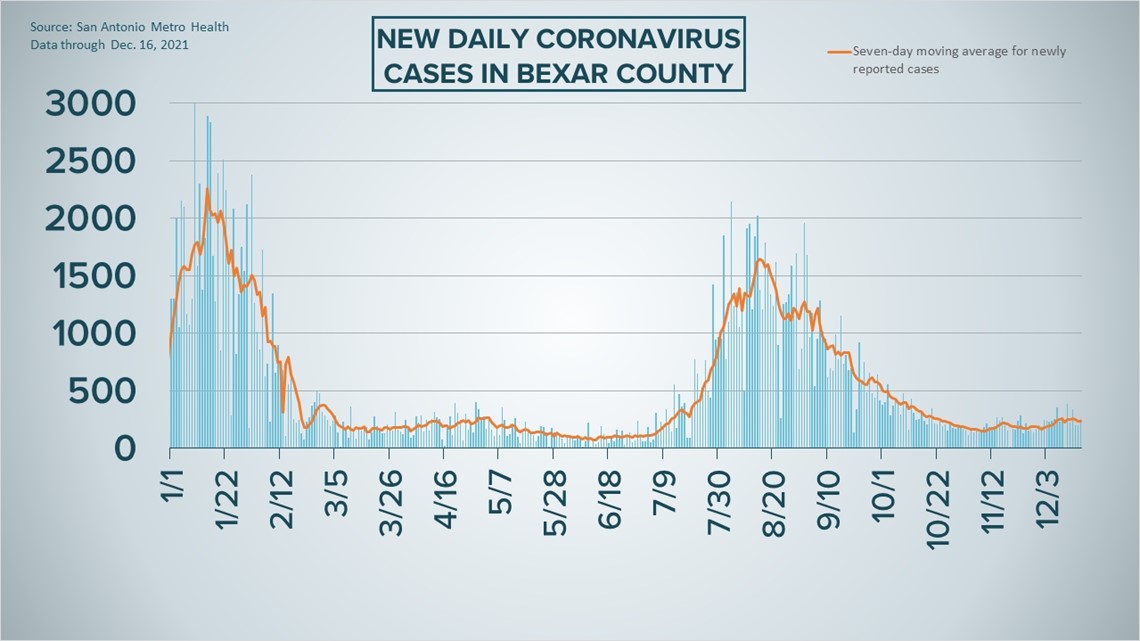

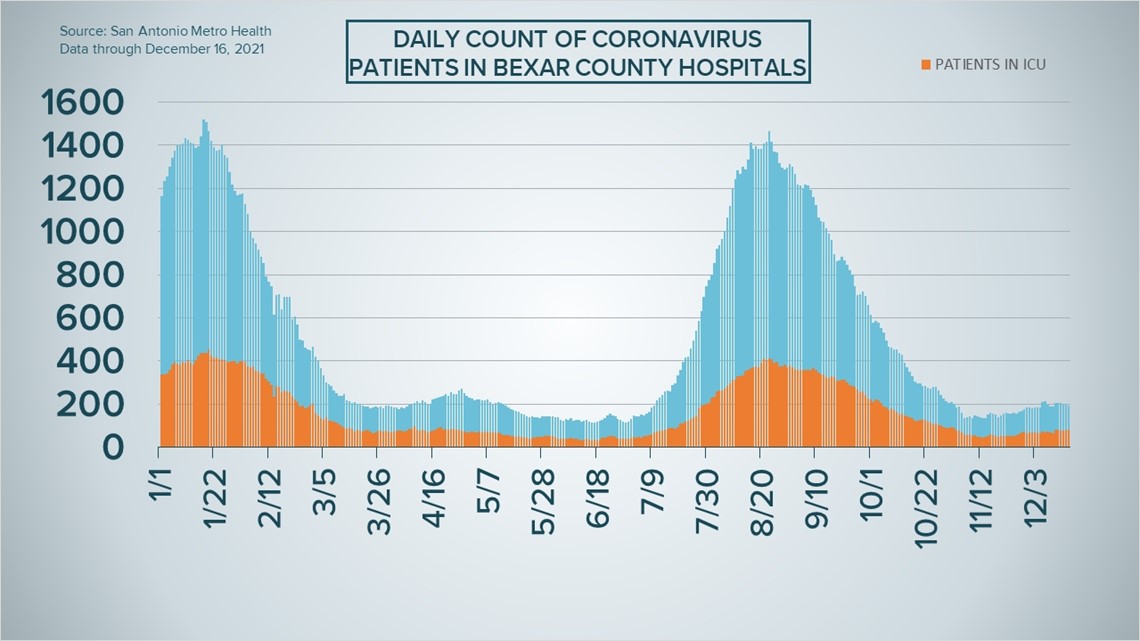
Vaccine Progress in Bexar County
The following numbers are provided by San Antonio Metro Health. A full breakdown can be found here.
- 1.614 million eligible Bexar County residents have received at least one dose of the coronavirus vaccine as of Thursday, Dec. 16, representing 85.1% of the county's population eligible (those over the age of 4) to receive a vaccination.
- 1.336 million eligible Bexar County residents are fully vaccinated as of Thursday, Dec. 16, representing 70.5% of the county's population eligible to receive a vaccination.

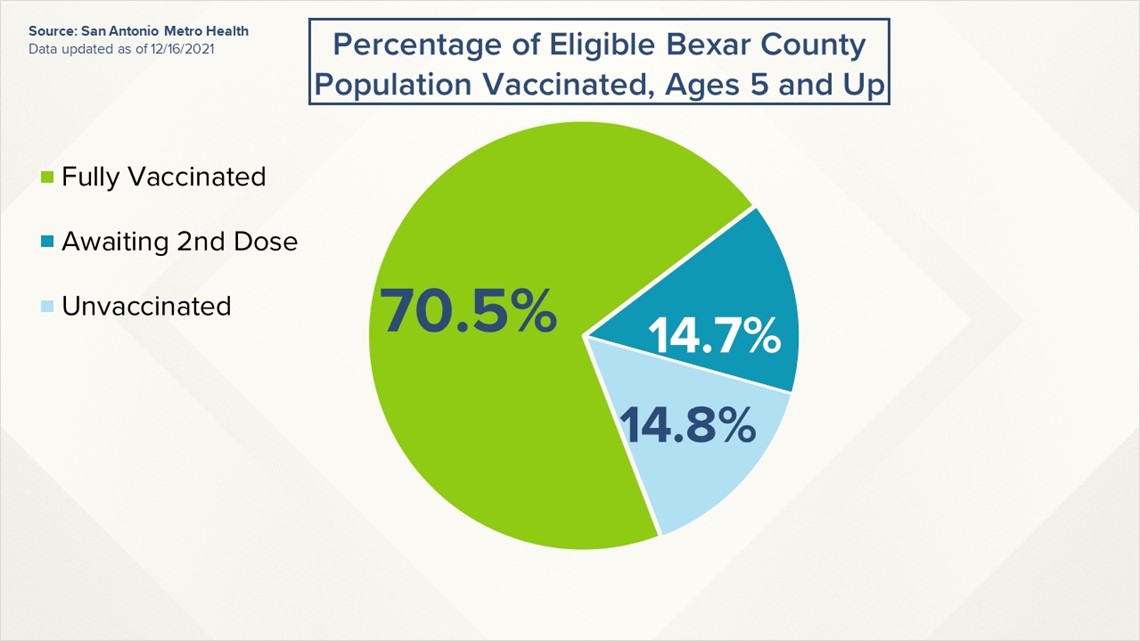
The CDC states that "when a high percentage of the community is immune to a disease (through vaccination and/or prior illness)," that community will have reached herd immunity, "making the spread of this disease from person to person unlikely."
The City of San Antonio breaks down the vaccination rates by zip code on Metro Health's Vaccination Statistics page.
Across Texas, 16.192 million residents are fully vaccinated, according to the Texas Department of State Health Services. In total, the state has administered 37.071 million vaccine doses, as of Thursday, Dec. 9.
Texas is in the middle of the pack among the rest of the states, with between 49 to 65% of its population fully vaccinated, as of Dec. 5.

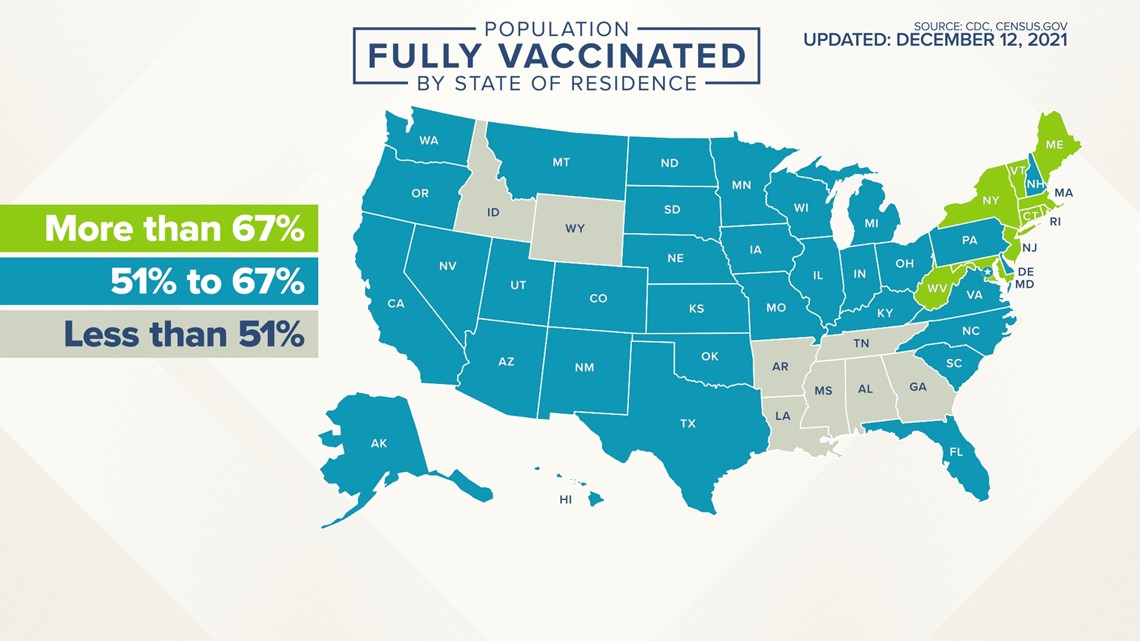
Coronavirus symptoms
The symptoms of coronavirus can be similar to the flu or a bad cold. Symptoms include fever or chills, cough, shortness of breath or difficulty breathing, fatigue, muscle or body aches, headache, new loss of taste or smell sore throat, congestion or runny nose, nausea or vomiting, and diarrhea, according to the Centers for Disease Control.
Most healthy people will have mild symptoms. A study of more than 72,000 patients by the Centers for Disease Control in China showed 80 percent of the cases there were mild.
But infections can cause pneumonia, severe acute respiratory syndrome, kidney failure, and even death, according to the World Health Organization. Older people with underlying health conditions are most at risk.
Experts determined there was consistent evidence these conditions increase a person's risk, regardless of age:
- Chronic kidney disease
- COPD (chronic obstructive pulmonary disease)
- Obesity (BMI of 30 or higher)
- Immunocompromised state (weakened immune system) from solid organ transplant
- Serious heart conditions, such as heart failure, coronary artery disease, or cardiomyopathies
- Sickle cell disease
- Type 2 diabetes
- The CDC believes symptoms may appear anywhere from two to 14 days after being exposed.
Human coronaviruses are usually spread...
- Between people who are in close contact with one another (within about 6 feet).
- Through respiratory droplets produced when an infected person coughs, sneezes or talks. These droplets can land in the mouths or noses of people who are nearby or possibly be inhaled into the lungs.
- Some recent studies have suggested that COVID-19 may be spread by people who are not showing symptoms.
Help stop the spread of coronavirus
- Get vaccinated
- Wear a mask
- Stay home when you are sick.
- Eat and sleep separately from your family members
- Use different utensils and dishes
- Cover your cough or sneeze with your arm, not your hand.
- If you use a tissue, throw it in the trash.
Find a Testing Location
City officials recommend getting a COVID-19 test if you experience fever or chills, cough, shortness of breath or difficulty breathing, fatigue, muscle or body aches, headache, new loss of taste or smell, sore throat, congestion or runny nose, nausea or vomiting, or diarrhea.
Here's a Testing Sites Locator to help you find the testing location closest to you in San Antonio.

